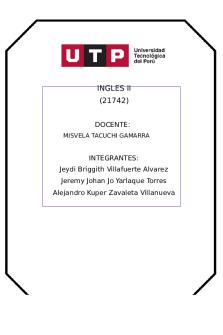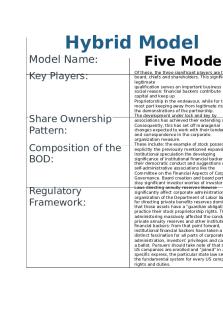Week 6 - Required Short Writing Piece PDF

| Title | Week 6 - Required Short Writing Piece |
|---|---|
| Course | Seamus Heaney and Modern Irish |
| Institution | University College Dublin |
| Pages | 1 |
| File Size | 76.9 KB |
| File Type | |
| Total Downloads | 17 |
| Total Views | 128 |
Summary
Required Short Writing Piece ...
Description
-
Using two poems from this week’s list, examine the difference between Heaney’s early and later engagements with the theme of tribal violence.
-
DN (1966): ‘Death of a Naturalist’’, NSP 1966-1987 p.3 DD (1969): ‘Requiem for the Croppies’, NSP 1966-1987 p.12 WO (1972): ‘The Tullond Man’, NSP 1966-1987 p.31 N (1975): ‘Bog Queen’, NSP 1966-1987 p.66 FW (1979): ‘Casualty’, NSP 1966-1987 p.100 SI (1984): ‘‘Station Island’ IX (‘My brain dried...’), NSP 1966-1987 p.186 HL (1987): ‘From the Canton of Expectation’, NSP 1966-1987 p.236 ST (1991): ‘The Settle Bed’, NSP 1988-2013 p.13 SL (1996): ‘Two Lorries’, NSP 1988-2013 p.69 EL (2001): ‘Sonnets from Hellas 4: The Augean Stables’, NSP 1988-2013 p.135 DC (2006): ‘The Tullond Man in Springtime’, NSP 1988-2013 p.166 HC (2010): ‘Route 110, IX (‘And what in the end…’), NSP 1988-2013 p.207
Allusions to history and use of natural imagery permeate Heaney’s early and late work when addressing tribal violence, however, there are some differences in the morale the poet presents and his perceived connection with these instances. In “Requiem for the Croppies”, published in 1969, Heaney uses the first person plural. For example, it is stated that “we found new tactics” and most significantly when the fate of the rebels is realised at the conclusion of the poem Heaney states that “they buried us without coffins”. In this way, Heaney and the reader become part of the rebellion, unable to avoid being an active participant. The suffering of the fighters is made all the more real and this active role is seemingly carried forward to the present day, where rebels continued to fight for “our own country”. In contrast, “Sonnets from Hellas 4: The Augean Stables” presents heroes of old not participating in violence, but rather interacting with nature. The use of water imagery presents ideas of cleansing, “packed floors deluging like gutters” are noted. These allusions to Antiquity then collide with the contemporary murder of Sean Browne. His blood is washed away from the pavement using “hose-water” rather than the aforementioned river. The human cruelty that was once incorporated by nature in “Requiem” where “the barley grew up out of the grave”, has now been rejected as unacceptable brutality. Heaney is also clear to distance himself from these more modern acts, stating that “we heard of Sean Browne’s murder”. This phrasing creates a sense of distance and removes elements of traditional tribalism that existed in his earlier work. Clearly, as Heaney grew older and the Troubles carried on, he became fatigued with the violence that was once celebrated as glorious acts of martyrdom in the name of country....
Similar Free PDFs

Week 6 Week 6 Week 6Week 6
- 2 Pages

Week 3 Short Responses
- 4 Pages

Week 2 Short Responses –
- 2 Pages

Week 5 Short Responses
- 1 Pages

Week 10 On-going project piece
- 1 Pages

Week 6 ingles Week 6
- 2 Pages

Week 6 Assignment - Week 6
- 11 Pages

Week 7 Writing Assignment
- 1 Pages

HIS200 Week Six Short Responses
- 2 Pages
Popular Institutions
- Tinajero National High School - Annex
- Politeknik Caltex Riau
- Yokohama City University
- SGT University
- University of Al-Qadisiyah
- Divine Word College of Vigan
- Techniek College Rotterdam
- Universidade de Santiago
- Universiti Teknologi MARA Cawangan Johor Kampus Pasir Gudang
- Poltekkes Kemenkes Yogyakarta
- Baguio City National High School
- Colegio san marcos
- preparatoria uno
- Centro de Bachillerato Tecnológico Industrial y de Servicios No. 107
- Dalian Maritime University
- Quang Trung Secondary School
- Colegio Tecnológico en Informática
- Corporación Regional de Educación Superior
- Grupo CEDVA
- Dar Al Uloom University
- Centro de Estudios Preuniversitarios de la Universidad Nacional de Ingeniería
- 上智大学
- Aakash International School, Nuna Majara
- San Felipe Neri Catholic School
- Kang Chiao International School - New Taipei City
- Misamis Occidental National High School
- Institución Educativa Escuela Normal Juan Ladrilleros
- Kolehiyo ng Pantukan
- Batanes State College
- Instituto Continental
- Sekolah Menengah Kejuruan Kesehatan Kaltara (Tarakan)
- Colegio de La Inmaculada Concepcion - Cebu






